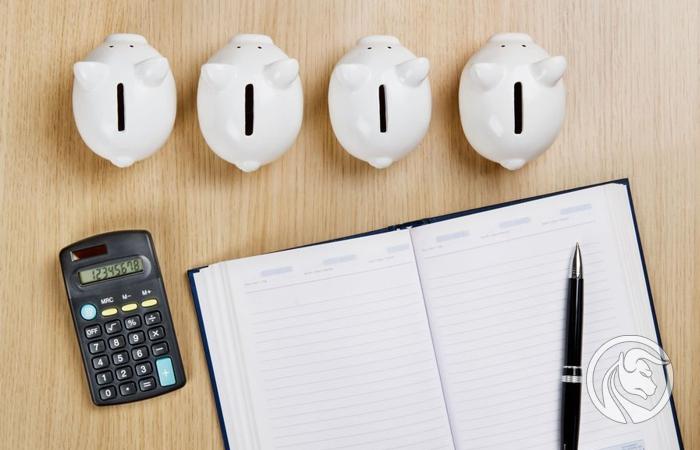Risk management of all capital in the forex market
Reading many studies, attending trainings or lectures, participating in industry conferences, we can usually read the statement that says: do not risk more than ... percent of your capital for one transaction. Usually, we can substitute one to three percent for the "three dots". On the other hand, we observe various types of results of forex investors who can boast a rate of return of several hundred percent. Of course, with a much greater risk. Is risk management so important?
How, then, reconcile a small risk with achieving above-average rates of return? This is what this entry will be about.
The maximum risk per transaction is ...
Let's go back to the first sentences "risk no more than ... percentage of capital", the key here is the word "capital". The routine for most people is similar. They work, they have a business, they received more money from someone, they collected money from their own work and now they are wondering how to make money out of money. If they decide to speculate in the forex market, they will usually deposit all available capital. Let's say, let it amount to PLN 30.
And here the first issue begins. Why pay all the capital available to the broker account, if we have a leverage mechanism that works like a loan?
Let's assume that hardly anyone asked such a question at the beginning - he has money, it pays it and already - and then, according to the rules, he starts to risk from 1 to 3 percent. capital, or from 300 to 900, for one transaction.
READ NECESSARY: Forex risk management. Tools helpful in trading
If speculative decisions are right, there will be no problem. However, statistics show that it may not be that rosy.
The threats are ... Emotions
It threatens above all with emotional action. If, for example, three transactions in a row failed with the risk of 1 percent, then in the flow of emotions, the chances are growing that the next transaction will have a risk of 3 percent, if this in turn fails, then the risk of trade goes against the rules and increasing the risk to e.g. 5 or 10 proc. What's more, this mechanism will wind up and all capital can be easily "zeroed".

Consider for a moment why? Because the trader first had access to capital, because it was his money at the end, he did not have anyone to tell him that he might have to let go and he could treat the first transactions nonchalantly, because it's only 1 percent. losses.
Our internal weakness, emotions, lack of self-discipline and above all, easy access to the rest of the funds, because they were entirely transferred to the brokerage account, are to blame here.
How to try to prevent this?
This is the way I described on my blog years ago, which is to split your forex capital into smaller pools. So the amount from the example of PLN 30 can be divided into 000 parts of PLN 10 each. Then, 3 are deposited on the broker's account and 000 are safe. As we have access to financial leverage, we are able to open the same position on an account with PLN 3 as on an account with PLN 000 (when it comes to lot size). Therefore, both with an account of PLN 30 and PLN 000, we can risk from PLN 30-000.
Then 300 - 900 zlotys will be still 1 - 3 percent. the risk for the entire capital that we want to spend on forex and 10 - 30 proc. risk only for 1 / 10, which is located at the broker's.
The advantages of sharing a deposit
 Firstthe advantage of this solution is the fact that only 1 / 10 (or some other individually determined part of the capital) is at the broker's. If one who has already had a place in history, fell into the ground (because we chose a less reliable company), we do not lose all the money.
Firstthe advantage of this solution is the fact that only 1 / 10 (or some other individually determined part of the capital) is at the broker's. If one who has already had a place in history, fell into the ground (because we chose a less reliable company), we do not lose all the money.
Secondly, we choose transactions only those that have a better chance of success, because in the psyche we do not risk 1 - 3 percent, only 10 - 30 percent. (although nominally nothing changes, our head takes it differently). Then we know that we have the opportunity to perform three transactions on one pool of capital. So transactions must be as good as possible, not nonchalant, otherwise we will quickly see "zero" on the bill, which we do not want (even if it is a small amount).
ThirdlyHowever, if it turns out that we have lost funds from a small account, we have a fuse that cuts off from the rest of the funds. The fuse is, for example, the time that must be spent on making a transfer, payment with a card, etc. This causes that there may be time to think "what I am doing? Maybe you need to rest. "
Fourthly, absolutely nothing changes. So the size of the position for part of the capital is the same as for the whole capital with the risk of 1 - 3 percent.
Summation
This solution is ideal for those who are not able to master themselves perfectly (and most can not), protect against hasty action, impose an automatic fuse, cause that fewer transactions occur, especially nonchalance, better transactions are made, which should translate into greater efficiency and improve the final result.






















![Forex Club – Tax 9 – Settle tax on a foreign broker [Download the Application] Forex Club - Tax 9](https://forexclub.pl/wp-content/uploads/2024/02/Forex-Club-Podatek-9-184x120.jpg?v=1709046278)
![Trading View platform – solutions tailored to the needs of traders [Review] trading view review](https://forexclub.pl/wp-content/uploads/2024/03/trading-view-recenzja-184x120.jpg?v=1709558918)
![How to connect your FP Markets account to the Trading View platform [Guide] fp markets trading view](https://forexclub.pl/wp-content/uploads/2024/02/fp-markets-trading-view-184x120.jpg?v=1708677291)
![How to invest in ChatGPT and AI? Stocks and ETFs [Guide] how to invest in chatgpt and artificial intelligence](https://forexclub.pl/wp-content/uploads/2023/02/jak-inwestowac-w-chatgpt-i-sztuczna-inteligencje-184x120.jpg?v=1676364263)


![Izabela Górecka – “Success on the market depends not only on knowledge, but also on emotional stability” [Interview] Izabela Górecka - interview](https://forexclub.pl/wp-content/uploads/2024/04/Izabela-Gorecka-wywiad-184x120.jpg?v=1713870578)
![WeWork – the anatomy of the collapse of a company valued at $47 billion [WeWork, part II] wework bankruptcy story](https://forexclub.pl/wp-content/uploads/2024/04/wework-bankructwo-historia-184x120.jpg?v=1711729561)
![Adam Neumann – the man who screwed up Softbank [WeWork, part AND] adam neumann wework](https://forexclub.pl/wp-content/uploads/2024/04/adam-neumann-wework-184x120.jpg?v=1711728724)





![How to transfer shares to another brokerage office [Procedure description] how to transfer shares to another brokerage house](https://forexclub.pl/wp-content/uploads/2024/03/jak-przeniesc-akcje-do-innego-biura-maklerskiego-184x120.jpg?v=1709556924)
![The most common mistakes of a beginner trader - Mr Yogi [VIDEO] Scalping - The most common mistakes of a beginner trader - VIDEO](https://forexclub.pl/wp-content/uploads/2024/03/Scalping-Najczestsze-bledy-poczatkujacego-tradera-VIDEO-184x120.jpg?v=1711601376)
![Learning patience: No position is also a position - Mr Yogi [VIDEO] Scalping - Learning patience - No position is also a position - VIDEO](https://forexclub.pl/wp-content/uploads/2024/03/Scalping-Nauka-cierpliwosci-Brak-pozycji-to-tez-pozycja-VIDEO-184x120.jpg?v=1710999249)
![When to exit a position and how to minimize losses - Mr Yogi [VIDEO] Scalping - When to exit a position and how to minimize losses - VIDEO](https://forexclub.pl/wp-content/uploads/2024/03/Scalping-Kiedy-wyjsc-z-pozycji-i-jak-minimalizowac-straty-VIDEO-184x120.jpg?v=1710336731)




![Day Trading or Scalping? Money Management – Mr Yogi, part 2 [VIDEO] Money Management - MrYogi. Time frames and position size risk](https://forexclub.pl/wp-content/uploads/2023/11/Money-Management-przedzialy-czasowe-v2-300x200.jpg?v=1701591046)

![Building a risk management plan - How to do it? [Guide] risk management](https://forexclub.pl/wp-content/uploads/2021/12/zarzadzanie-ryzykiem-300x200.jpg?v=1639495023)











